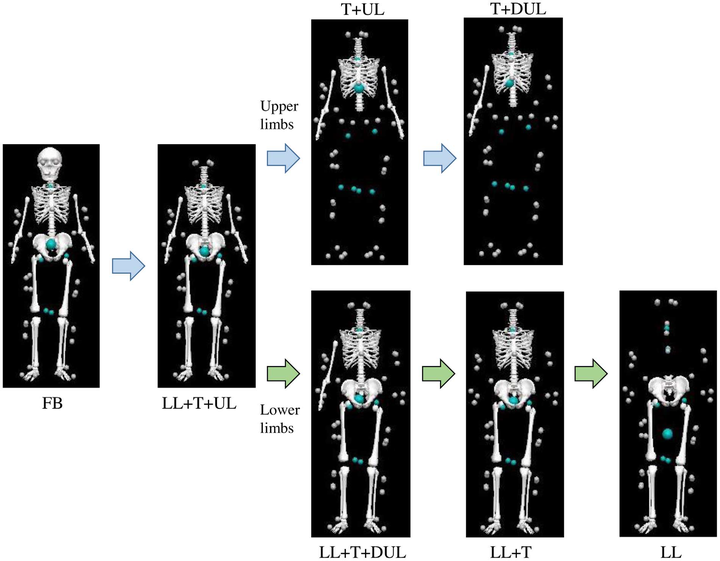Can segmental model reductions quantify whole-body balance accurately during dynamic activities?

Abstract
When investigating whole-body balance in dynamic tasks, adequately tracking the whole-body centre of mass (CoM) or derivatives such as the extrapolated centre of mass (XCoM) can be crucial but add considerable measurement efforts. The aim of this study was to investigate whether reduced kinematic models can still provide adequate CoM and XCoM representations during dynamic sporting tasks. Seventeen healthy recreationally active subjects (14 males and 3 females; age, 24.9 ± 3.2 years; height, 177.3 ± 6.9 cm; body mass 72.6 ± 7.0 kg) participated in this study. Participants completed three dynamic movements, jumping, kicking, and overarm throwing. Marker-based kinematic data were collected with 10 optoelectronic cameras at 250 Hz (Oqus Qualisys, Gothenburg, Sweden). The differences between (X)CoM from a full-body model (gold standard) and (X)CoM representations based on six selected model reductions were evaluated using a Bland-Altman approach. A threshold difference was set at ± 2 cm to help the reader interpret which model can still provide an acceptable (X)CoM representation. Antero-posterior and medio-lateral displacement profiles of the CoM representation based on lower limbs, trunk and upper limbs showed strong agreement, slightly reduced for lower limbs and trunk only. Representations based on lower limbs only showed less strong agreement, particularly for XCoM in kicking. Overall, our results provide justification of the use of certain model reductions for specific needs, saving measurement effort whilst limiting the error of tracking (X)CoM trajectories in the context of whole-body balance investigation.